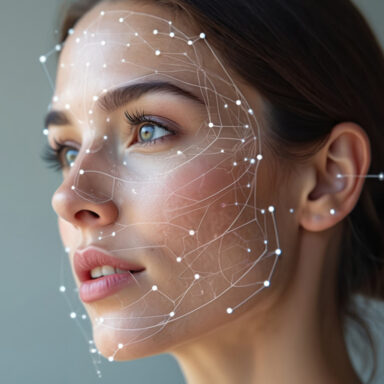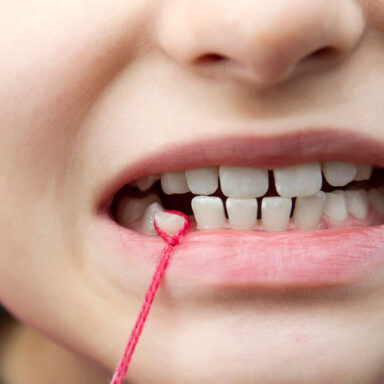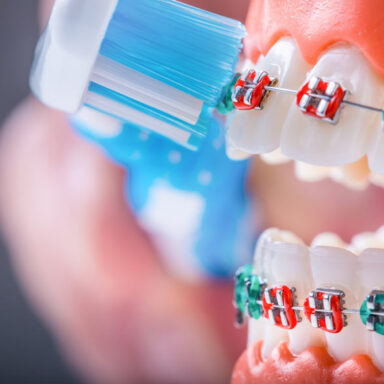Guidebook
Invisalign – your invisible tooth correction
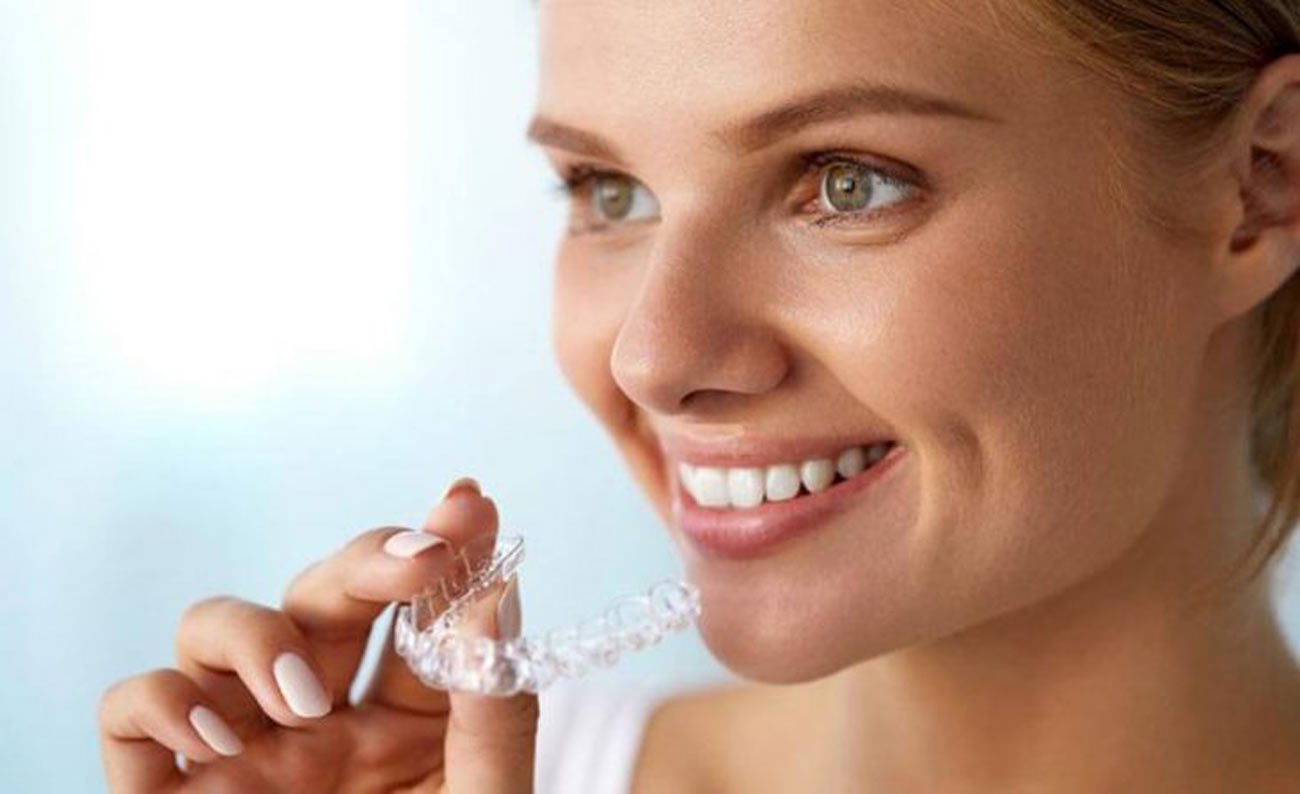
Invisalign – perhaps you’ve heard the word before but can’t quite define it? It’s all about beautiful, straight teeth, but how exactly does this method of teeth straightening actually work? And what is the difference to fixed braces?
In our blog article, we explain everything. Here you can find out what exactly “Invisalign” means, how we proceed in our practice and what the advantages are. You will also find helpful tips if you are currently in the decision-making phase.

Author
Dr. Fabian von Rom
Date
Estimated reading time
approx. 5 min
Invisalign
Contents
This is Invisalign
Invisalign – this word is currently on everyone’s lips. But what exactly does this term mean and how does Invisalign treatment actually work?
Invisalign is a comfortable and virtually invisible way of straightening teeth. Due to its invisibility, this type of braces is particularly popular with adults, but younger patients are also increasingly asking for transparent aligners such as Invisalign.
During Invisalign treatment, your teeth are moved step by step into the pre-defined target position with the help of transparent plastic aligners.
The main advantages of this tooth correction are the flexible removal and inconspicuousness of the transparent aligners. They therefore do not interfere with eating or everyday life, for example when brushing your teeth. In some cases, so-called attachments are required in addition to the corrective splints so that the splint can grip and move the tooth better. These are small tooth-colored plastic nubs that adhere firmly to the tooth and remain in the mouth even when the splint is not being worn.
The Invisalign treatment procedure looks like this
How long an Invisalign treatment lasts always depends on the misalignment of your teeth and the complexity of the planned tooth movement. Periods of a few weeks up to 1.5 years are quite realistic.
In an initial consultation appointment, we look at the current position of your teeth together with you. We will discuss with you what changes you would like to see. In most cases, we can already make a relatively precise estimate of the expected treatment costs at this stage. For concrete planning, we usually require further information, which we take from X-ray images (3D scan and photos). We will discuss the evaluation of the findings and the resulting individual treatment options with you in a separate appointment.
We will be happy to provide you with detailed information about all therapeutic options, the duration of treatment and the expected costs. If, for example, Invisalign treatment is not an option for you, invisible fixed braces on the inside of the teeth could be a good alternative to treatment with transparent aligners.
The fabrication of your aligners in the case of Invisalign treatment is completely customized. The number of aligners required varies depending on the complexity of the treatment.
The splints are changed at intervals of 7-14 days. Check-ups at our practice take place every 6-10 weeks. Once the target position has been achieved and the misalignment of the teeth has been corrected, the result achieved must be stabilized. A so-called adhesive retainer is usually suitable for this. This is a delicate wire that is attached to the inside of the tooth and stabilizes the corrected tooth position. Alternatively, a passive removable retaining splint can be used.
Is Invisalign treatment covered by health insurance?
The statutory health insurance companies (AOK, BARMER, DAK, KKH, etc.) do not cover treatments that are carried out using aligner technology (e.g. Invisalign).
The situation is different with most private health insurance policies and supplementary dental insurance policies. Here it depends on the individual tariff conditions. It is not uncommon for treatment with transparent dental splints to be covered by private insurance and supplementary insurance.
What your Invisalign aligner looks like
Invisalign trays are custom-made from transparent plastic that are precisely adapted to you. In some cases, so-called attachments are also required. These are small tooth-colored lumps that are attached to the teeth and allow the transparent aligner to grip and move the tooth better.
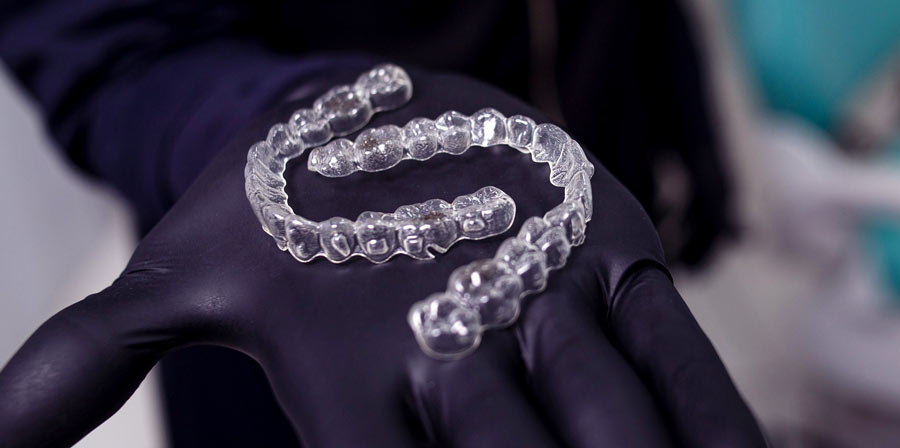
Are there any disadvantages with Invisalign?
First of all: Invisalign is a very pleasant treatment method. The discomfort is very limited.
You may be wondering whether you will experience pain during Invisalign treatment. As with any tooth movement – regardless of the method used – your teeth may be temporarily sensitive after the braces are activated. This slight pain after changing the Invisalign aligner is harmless and usually only lasts for a very short time.
Imagine that every tooth movement requires a force that acts on the tooth. This force is generated by your Invisalign aligner and transferred to the tooth. However, as the shifts are planned at intervals over several weeks, the force of the splint acts gently and gradually. This may manifest itself in the first 3 days after using a new splint in the form of a slight sensitivity to biting. In this case, eat soft rather than hard foods. In contrast to other methods, the advantage of Invisalign is that you can remove your braces while eating.
You should also be careful when drinking. If you keep the Invisalign splint in your mouth while drinking, only water is allowed. Drinking colored beverages such as tea or coffee can cause discoloration of teeth and aligners. Sweet and acidic drinks can damage teeth. It is therefore better to remove the transparent trays when drinking (except water).
Orthodontic treatment with clear aligners is very dependent on your cooperation. Don’t forget that you are the one who is responsible for your results. Therefore, wear your Invisalign aligner regularly and according to the instructions (approx. 22 h/day). Then you will be delighted with your result.
Is there an Invisalign alternative that is also invisible?
An Invisalign alternative is the so-called lingual technique. This is a completely invisible, fixed brace on the inside of the teeth. You can find more information about invisible braces here: https://kieferorthopaede-vonrom.de/en/lingual-orthodontics/
Your expert for orthodontics
Dr. Fabian von Rom
In the specialist practice for orthodontics, Dr. med, dent. Fabian von Rom uses his extensive expertise and many years of experience to offer patients the best possible care. The practice offers the entire spectrum of modern orthodontics and specializes in innovative and advanced treatment methods. In addition to traditional procedures, the focus is on treatment with invisible braces for teenagers and adults – one of the most modern and discreet solutions in orthodontics. Dr. med. dent. Fabian von Rom attaches great importance to ensuring that medical precision goes hand in hand with a high level of patient satisfaction. By equipping the practice exclusively with individual treatment rooms, individual and professional care at the highest level is guaranteed.

Further topics
In our guide you will find lots more information on current, relevant and interesting topics relating to orthodontics. We hope you enjoy reading it!
